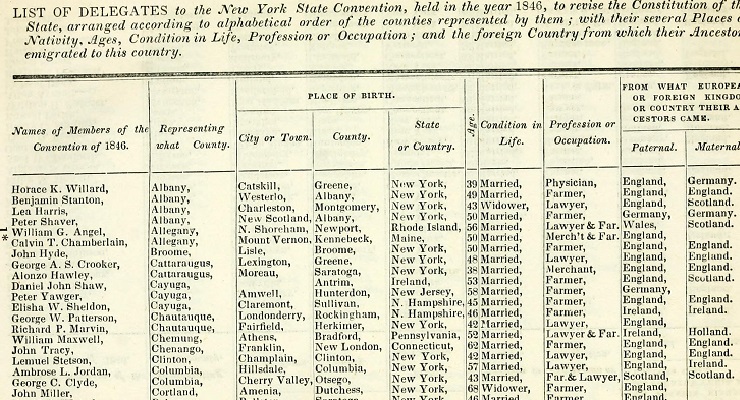
Holding a constitutional convention for the state could arguably be a chance for big reforms. An new article by J.H. Snider in the Times Union, a newspaper in New York’s Capital Region, was a great reminder. A key quote from the article was, “New York legislative turnover dropped from 67.3 percent in the 1870s to 10.2 percent in the 1980s”.
The last important changes made to the state constitution was during a state convention in 1821, after people voted in the April state election in favor of a convention. 1967 was the last time people voted in favor of a state Constitutional Convention but the new constitution that was written was later rejected by voters and the state resorted to business as usual. Here is an excerpt: from the Times Union piece:
On Nov. 7, New Yorkers will be asked whether they want to call a state constitutional convention. New York’s Constitution mandates that every 20 years this question be placed on the ballot. Based on the recent history of New York and other states, New Yorkers will most likely vote no.
New York’s constitutional convention process grants the people three sets of votes: to call a convention, to elect delegates to a convention, and to vote convention proposals up or down. The unique democratic function of this process is to provide the people with a mechanism to bypass the state Legislature’s veto power over constitutional amendments. Ordinarily, this veto power doesn’t hinder needed constitutional amendments. An exception occurs when a legislature’s and people’s interests conflict, including issues involving a legislature’s internal powers (e.g., legislative term limits, redistricting, ethics, transparency, and ballot access) and competing branches of government (e.g., judicial, executive, and local).
Some groups are resolutely opposed to such a move, and for decent reasons. The NYSUT, a federation of more than 1,200 local unions, had this to say in a recent post on their website:
Pecorale said NYSUT members must work together to educate each other, friends, families and communities about why we cannot risk destroying the state’s charter document. “We must understand the facts,” he said, “talk about serious repercussions from a possible constitutional convention, and vote to defeat the referendum on the ballot in 2017.”
To do that, said NYSUT Executive Vice President Andy Pallotta, “we need to work with others who share this priority, and there are a lot of them.” Voters rejected the last required call for a constitutional convention in 1997, after many groups worked together to convince voters that it was not in the best interest of the people of the state.
Leave a Reply